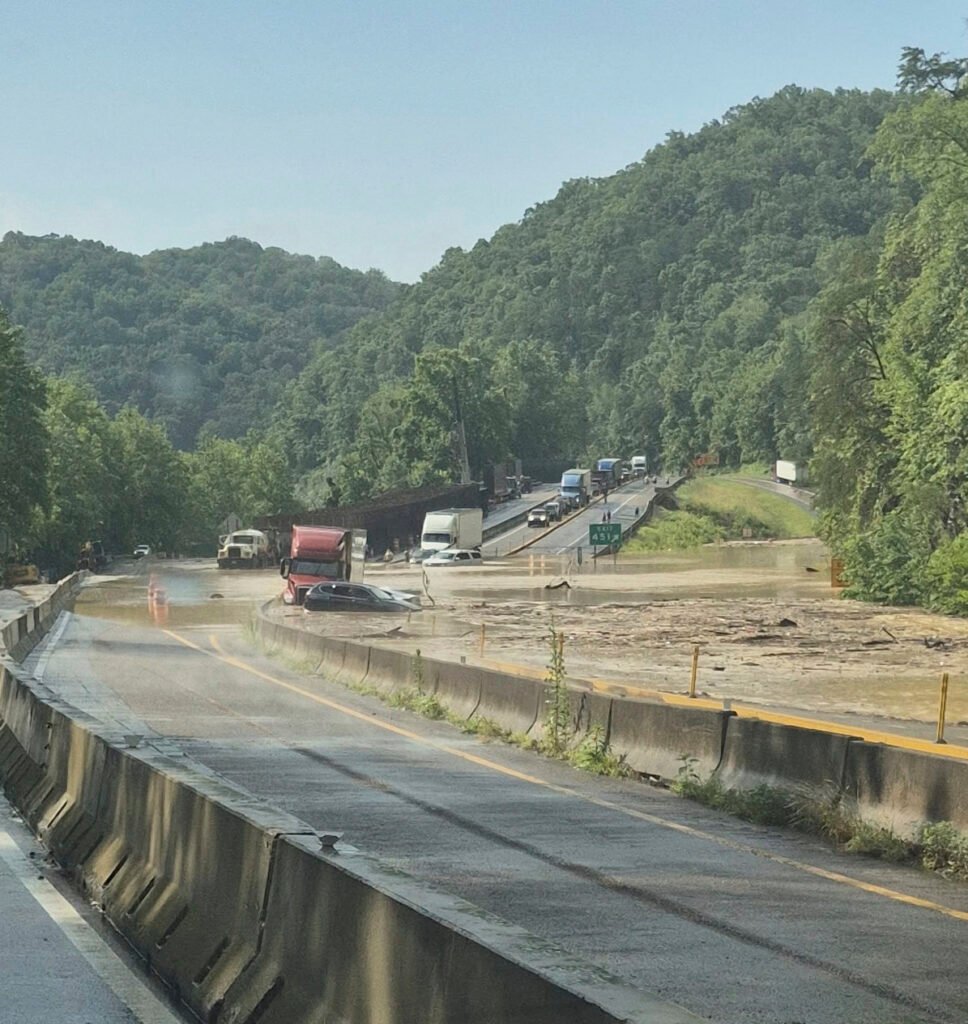I-40 Reopens Through the Smokies: A Welcome Relief for Travelers and Locals
As someone who’s spent years exploring every ridge and valley of the Great Smoky Mountains, I can tell you there’s something almost sacred about the narrow corridor where Interstate 40 cuts through these ancient hills. So when I heard the news that crews had finally reopened this vital stretch of highway after a nine-day closure, I felt a wave of relief that I know is shared by locals, travelers, and business owners throughout the region.
The interstate reopened on Friday after being shut down due to flooding and a rock slide—yet another challenge for a section of road that’s still recovering from the devastating impacts of Hurricane Helene last fall.
A Mountain Highway’s Ongoing Recovery
The reopening marks a significant milestone in what has been a challenging year for one of America’s most important east-west corridors. I-40’s path through the Smokies has always been vulnerable to the whims of nature, but the damage from Hurricane Helene last September was truly unprecedented.
When I visited the area shortly after Helene, the destruction was heartbreaking. Massive washouts had completely removed sections of the roadway, leaving behind scenes that looked more like a war zone than a national highway. The North Carolina Department of Transportation has been working diligently since then on major repair projects to restore this critical infrastructure.
This recent nine-day closure was yet another reminder of just how fragile our connection through these mountains can be.
Why This Reopening Matters
For those who don’t regularly travel this route, it might be hard to understand just how significant I-40’s path through the Smokies truly is. Allow me to explain why this reopening is so important:
- It’s a crucial east-west shipping corridor connecting the Southeast to the rest of the country
- Local economies in towns like Hartford, Tennessee and nearby communities depend on the traffic flow
- Alternative routes add hours to travel time, burning extra fuel and increasing costs
- Tourism in the Great Smoky Mountains National Park—America’s most visited national park—relies on easy access
Impact on Local Communities
Having spent countless weekends in small towns along this corridor, I’ve seen firsthand how closures affect local businesses. When I-40 shuts down, it’s not just an inconvenience—it’s a financial blow to the family-owned restaurants, shops, and lodges that depend on highway travelers.
Hartford, Tennessee—where this recent slide occurred—is a gateway community to some of the most beautiful sections of the Smokies. The rafting companies, hiking outfitters, and small businesses here have already weathered a difficult year following Hurricane Helene’s impact. This reopening couldn’t come at a more critical time as we head into the summer tourism season.
The Engineering Challenge of Mountain Highways
What many travelers don’t realize as they cruise through the spectacular gorge where I-40 meets the Pigeon River is just how remarkable this highway is from an engineering perspective. The roadway is literally carved into steep mountain slopes, with the river below and towering rock faces above.
This creates a perfect storm for potential closures:
| Natural Hazard | Risk to Highway |
|---|---|
| Heavy Rainfall | Flooding, washouts, landslides |
| Freezing/Thawing Cycles | Rock slides, falling debris |
| Tropical Systems | Catastrophic flooding, major structural damage |
The crews who work to keep this highway open deserve our deepest gratitude. They’re often operating in dangerous conditions, racing against both the elements and the clock to restore this vital connection.
Looking Forward: Resilience in the Face of Climate Challenges
I’ve been traveling I-40 through the Smokies for over two decades now, and I’ve noticed these closures becoming more frequent. Climate scientists have warned that the Southeast will likely experience more intense precipitation events in the coming years, which does not bode well for vulnerable mountain infrastructure.
The ongoing repairs from Hurricane Helene have reportedly included measures to make the highway more resilient to future weather events. This forward-thinking approach is essential if we want to maintain reliable access through this beautiful but challenging terrain.
Planning Your Smoky Mountain Journey
If you’re planning to travel through the Smokies in the coming months, I’d strongly recommend checking road conditions before departing. While I-40 is open now, repair work is ongoing, and temporary closures or delays remain possible.
The silver lining? Even with some construction zones, the drive through this section of the Smokies remains one of the most scenic interstate journeys in America. The way the morning mist hangs in the valleys, the sudden glimpses of whitewater in the Pigeon River gorge, the explosion of wildflowers along the roadside in spring—these are sights that make even traffic slowdowns bearable.
A Resilient Mountain Passage
As someone who cherishes every visit to these mountains, I’m grateful to see this critical artery reopened. The Great Smokies have always represented resilience—their very name comes from the natural mist that rises from their valleys, a perpetual cycle of renewal.
It seems fitting that the highway that winds through them continues to demonstrate that same spirit of resilience, reopening time and again despite nature’s challenges.
Have you traveled through the Smokies on I-40 recently? I’d love to hear about your experience in the comments below.
Source: Associated Press

